Tabarzin Battle Axes
These Tabarzin Battle Axes are made from West Australian hardwood called JARRAH. They weigh 2lbs 8ozs each and are 24″ long.
My Inspiration to make Tabarzin Battle Axes
I was inspired to make the Tabarzin Battle Axes after I saw the front cover of Health & Strength (02 Nov 1907) magazine featuring Tom Burrows the Endurance Club Swinging Champion who was 39 years old at the time.
Out of curiosity, I decided to make a pair to see how they swing.
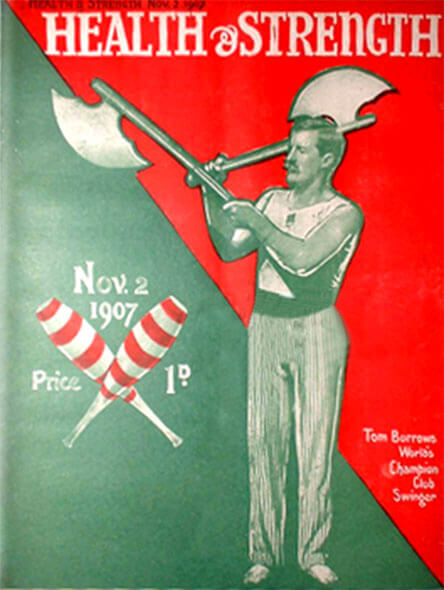
Tom Burrows – Endurance Club Swinging Champion
Self Imposed Deadline
My 67th birthday was coming up on the 9th of January 2017, and I made it my deadline to complete the Tabarzin Battle Axes project.
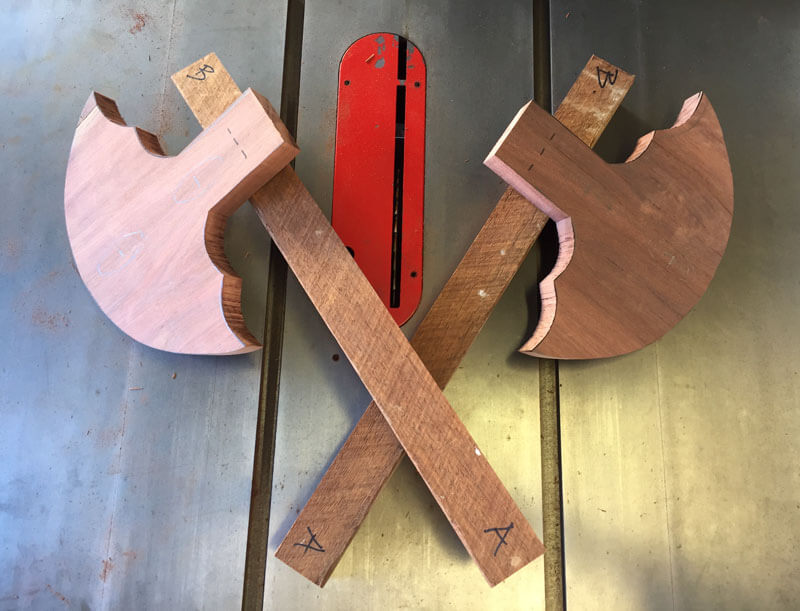
The Roughly Shaped Axe Heads and Handles
Crescent Shaped Axe Head
The origin of the shape of the axe head proved to be a mystery at first. Tom Burrows was an Australian, and I thought that the design of the axe head could come from the Australian Broad Axe that was commonly used in tree felling operations in the 19th and 20th centuries. After prolonged searches, I found Broad Axes with a slightly curved bit (edge/blade) rather than a crescent-shaped bit.
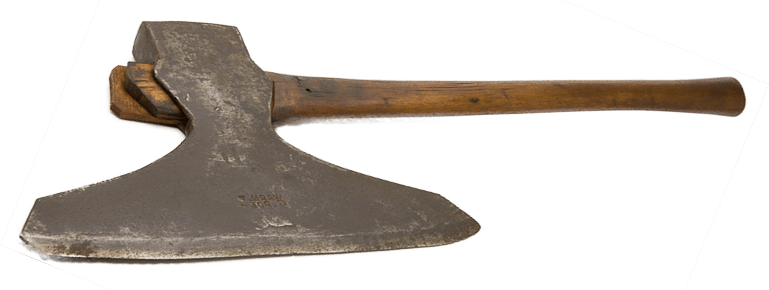
Australian Broad Axe
The New York Journal
During my search, I found an article about Tom Burrows in the New York Journal stating that he was stationed in Cairo, Egypt (1896) as a sergeant in the British army. This made me think that Burrows would have seen the Indo Persian Tabarzin Axe during his stay in Cairo, which inspired the design that he used for his axes.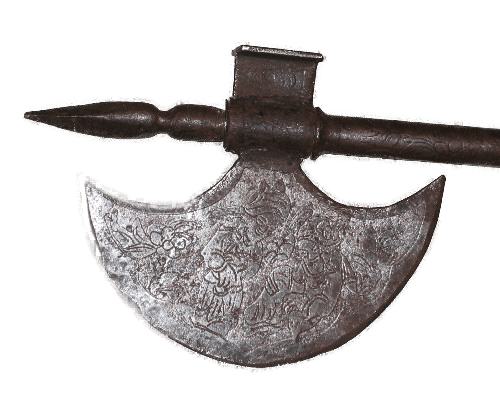
Indo-Persian Tabar
Endurance Club Swinging
The New York Journal article went on to describe an Endurance Club Swinging challenge where Burrows had set out to beat his own record of 24 hours nonstop swinging.
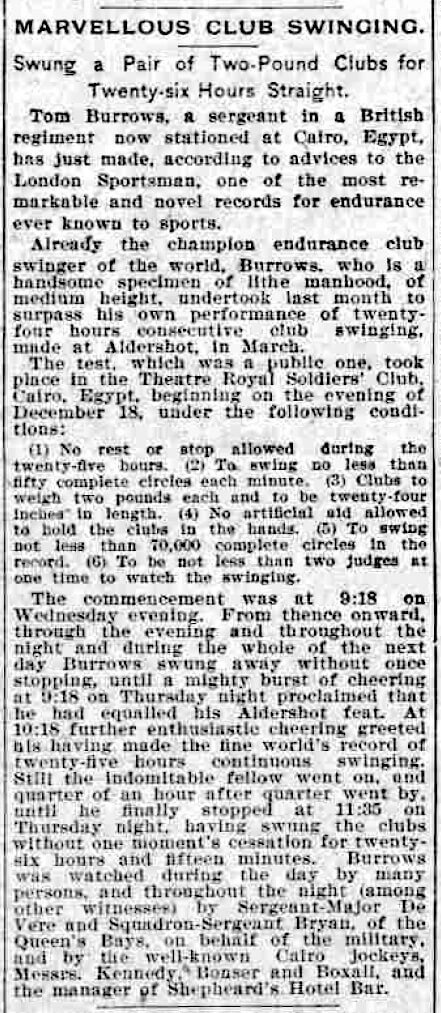
You may be interested to know that Tom Burrows continued his self-imposed Endurance Club Swinging challenges up until 1913 where he reached the mind-bending goal of swinging a pair of Indian Clubs weighing 3lbs 6ozs for 100 hours. Read more …
My experience of swinging a pair of Tabarzin Axes
Edge control of the axe blade is a massive challenge.
Gravitational Pull
I’m finding that the axe heads are governed and drawn by gravitational pull, which is surprisingly greater than the force of the swing I generate.

Orientation of the Blade
The next problem in swinging the axes is the twisting of the wrist and arm. The axis of rotation runs through the handle. Once swinging is started, the wrist and arm rotations come into play. The slightest twist of the wrist and arm is amplified by the distance between the axis of rotation and the edge of the axe head causing a twist deflection.

Learning to distinguish Twist Deflections
Both the Gravitational Pull and Orientation of the Blade force me to work out the inflight position of the axe head edge by feel alone and adjust the axis to avoid hitting myself, it is a huge and humbling learning curve to say the least.
Other interesting facts about the Tabarzin Battle Axe
The Tabarzin Battle Axe with its crescent-shaped blade originates from India, Persia, Armenia and surrounding countries.
Saddle Axe
The name Tabarzin means Saddle Axe (Persian) and was predominantly carried by the cavalry and occasionally foot soldiers.
Traditional Battle Axe
The Tabarzin or Tabar is a traditional Indo-Persian battle axe. It bears one or two crescent-shaped blades. The long form of the Tabar was about seven feet long, while a shorter version was about two to three feet long. This unique lightweight axe was always made from metal, sporting a wide yet very thin blade, a tubular handle and occasionally a concealed dagger that can be removed by the pommel. Weight circa 1lb to 6lbs.
Cutting and Chopping
A thin metal blade cuts human flesh more easily as opposed to wood chopping axes that are heavy and cumbersome because wood is a lot harder to cut than flesh.

Balance Guidelines
The balance of the Tabarzin axe is close to the axe head with the aim of producing a heavy impact with a relatively small sharp area, which gives it a more powerful blow. It also strikes in a smaller area compared to a sword, focusing the force even more. The balance point is 10” inches away from the handle and guard.
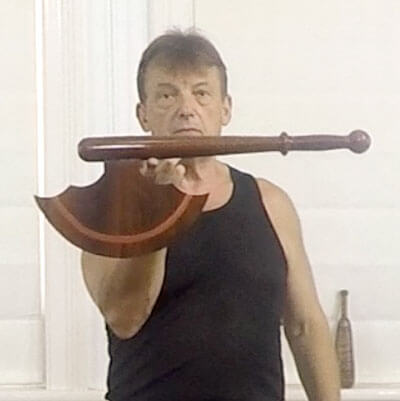
The Balance Point of the Tabarzin Axe
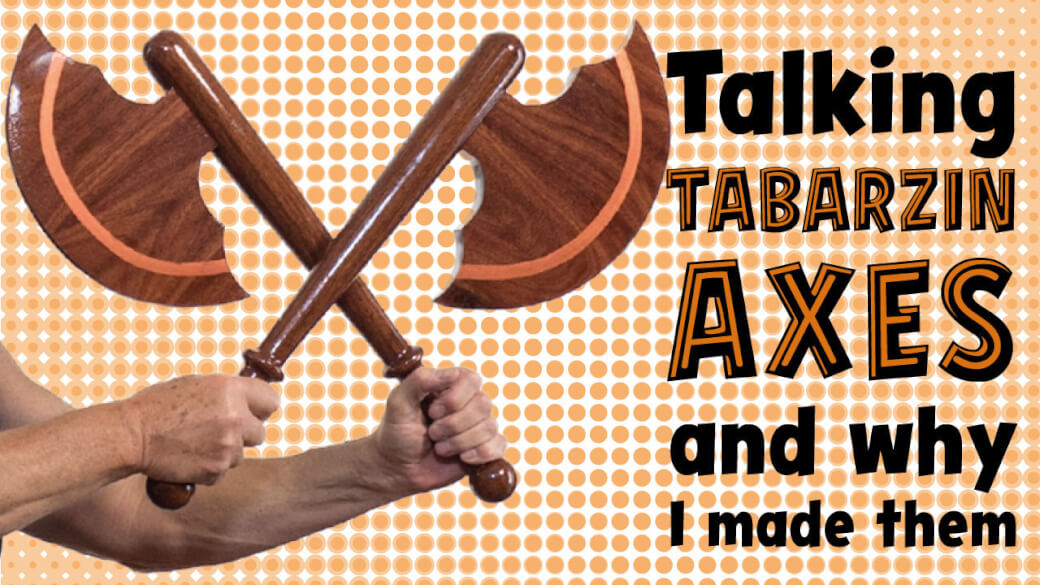

Thank you for sharing. I am enjoying club swinging and learning the history.
Hi Vicki, thanks for your feedback, I’m glad to hear you like the history
Any videos showing indian clubs exercises?
Hi Ivan,
Please visit http://www.indianclubsacademy.com this is a free beginners course that will get you going. Best Regards. Paul
Dear Paul, I enjoy all your lessons and video. It is remarkable and very much motivates. I was very much interested in Tabarzin which you use. I will be grateful to you if you send me all data as it is possible to make independently – weight, the sizes, scheme, etc.
I thank you.
Dear Paul.
That what are you doing – it is excellent. I saw all your exercises and video and it very much inspires and motivates.
I was very much interested in Tabarzin which you use. I will be grateful to you if you send me all data as it is possible to make independently – weight, the sizes, scheme, etc.
I thank you.
Dear Paul.
That what are you doing – it is excellent.
I was very much interested in Tabarzin which you use. I will be grateful to you if you send me all data as it is possible to make independently – weight, the sizes, scheme, etc.
I saw all your exercises and video and it very much inspires and motivates.
I thank you.
Hi Alex,
Thank you for your inquiry about the Tabarzin Axe. The length of the axe is 24″ inches long and they weigh 2.5lbs each.
Best Regards
Paul
Hi, do you plan to post the plan and work in progress ( for DIY) of your axe ?
Do you think that an regular axe or tomahawk ( full wood for sure) will swing in the same manner ?
Hi Felix, You can swing regular axes. In saying that, the regular axe handle is designed in a different way to my Tabarzin Axes. I decided to make my axes with a standard Indian Club handle and pommel. I wanted to make sure that I could control the blade part of the axe. Best Regards. Paul
Paul
Hi Felix, No not in the near future, maybe later when I have finished preparing the online courses that I am currently working on.
Hi Paul,
I have recently started learning the Indian clubs – very much enjoying them. On your YouTube channel (I am your subscriber) I have seen video with Tabarzin Axes. Could you please share the drawings (detailed dimensions)? I am thinking about making those myself.
Many thanks!
Oleg